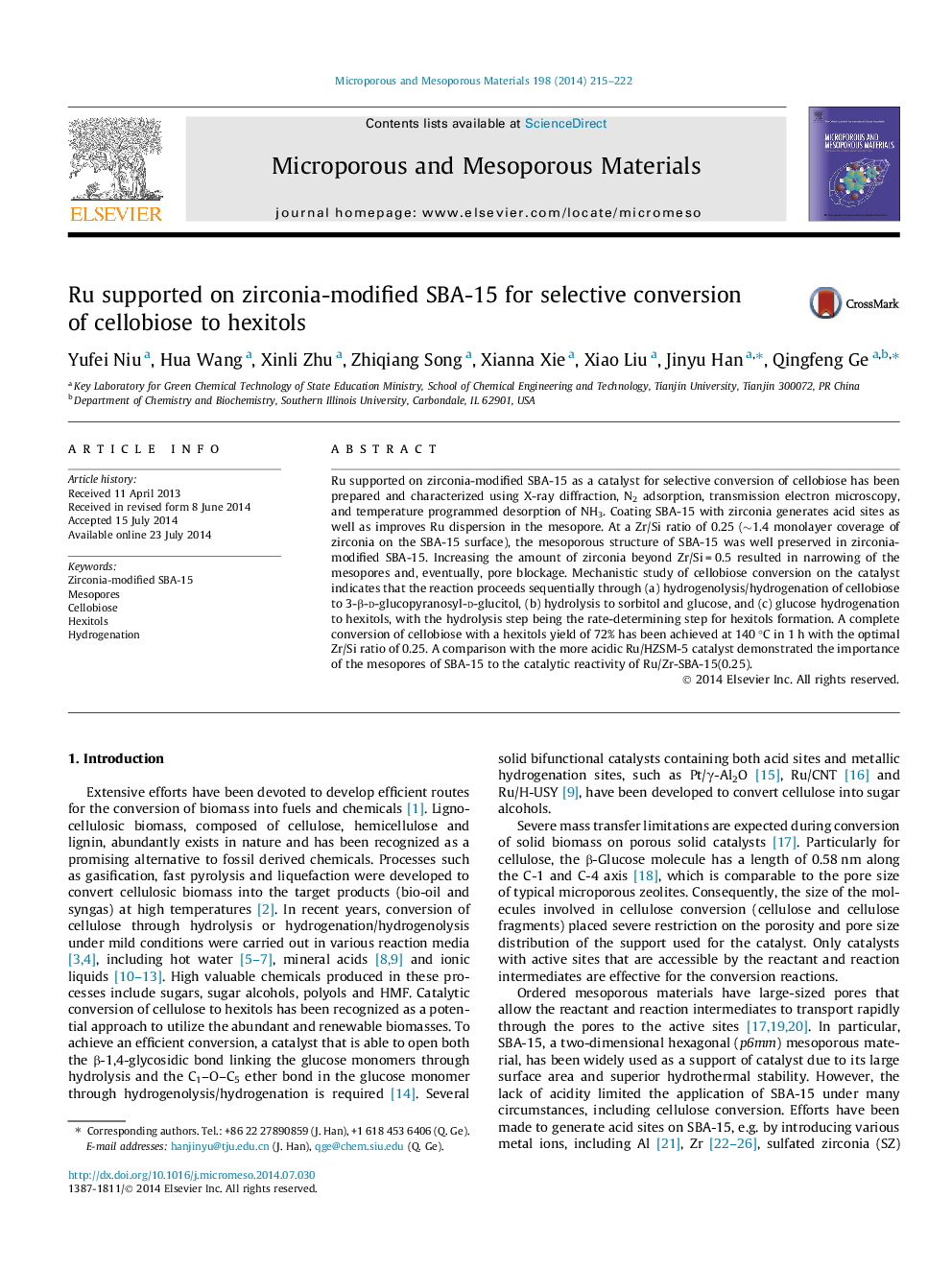| Article ID | Journal | Published Year | Pages | File Type |
|---|---|---|---|---|
| 72951 | Microporous and Mesoporous Materials | 2014 | 8 Pages |
•Supported Ru on zirconia-modified SBA-15 catalyst has been prepared.•Zirconia modifier creates acid sites and improves Ru dispersion.•Mesopores of SBA-15 was preserved at Zr/Si = 0.25.•Hydrogenation of cellobiose is the first step of the conversion.•Hydrolysis of glucitol is the rate-determining step.
Ru supported on zirconia-modified SBA-15 as a catalyst for selective conversion of cellobiose has been prepared and characterized using X-ray diffraction, N2 adsorption, transmission electron microscopy, and temperature programmed desorption of NH3. Coating SBA-15 with zirconia generates acid sites as well as improves Ru dispersion in the mesopore. At a Zr/Si ratio of 0.25 (∼1.4 monolayer coverage of zirconia on the SBA-15 surface), the mesoporous structure of SBA-15 was well preserved in zirconia-modified SBA-15. Increasing the amount of zirconia beyond Zr/Si = 0.5 resulted in narrowing of the mesopores and, eventually, pore blockage. Mechanistic study of cellobiose conversion on the catalyst indicates that the reaction proceeds sequentially through (a) hydrogenolysis/hydrogenation of cellobiose to 3-β-d-glucopyranosyl-d-glucitol, (b) hydrolysis to sorbitol and glucose, and (c) glucose hydrogenation to hexitols, with the hydrolysis step being the rate-determining step for hexitols formation. A complete conversion of cellobiose with a hexitols yield of 72% has been achieved at 140 °C in 1 h with the optimal Zr/Si ratio of 0.25. A comparison with the more acidic Ru/HZSM-5 catalyst demonstrated the importance of the mesopores of SBA-15 to the catalytic reactivity of Ru/Zr-SBA-15(0.25).
Graphical abstractFigure optionsDownload full-size imageDownload as PowerPoint slide
